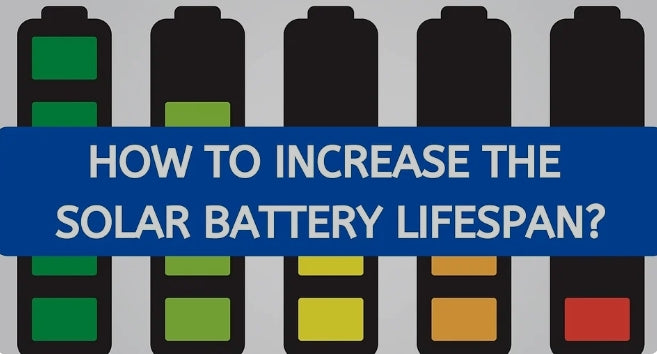
How Can You Extend the Lifespan of Your Solar Energy Battery?
Table of Contents
- Introduction
- Why Battery Longevity Matters
- Proper Charging and Discharging Practices
- Temperature Management and Battery Health
- Routine Maintenance for Solar Batteries
- Using Quality Battery Management Systems (BMS)
- Conclusion
Introduction
As solar energy systems grow in popularity, maximizing the lifespan of solar energy batteries has become a priority. In this guide, we’ll explore essential tips for extending the life of your solar battery, whether it’s a lithium-ion battery like the Seplos MASON 280 battery pack or an advanced solid-state option. A few proactive steps can go a long way in protecting your investment and maintaining reliable energy storage.
Why Battery Longevity Matters
Battery longevity is essential for both cost efficiency and sustainability. Solar energy batteries are a significant investment, so ensuring they last as long as possible can save you money and reduce environmental waste. Understanding battery wear factors and management techniques can help your batteries maintain optimal performance over years of usage, making your off-grid or backup energy system more reliable and efficient.

Proper Charging and Discharging Practices
Overcharging or undercharging can degrade a battery’s lifespan, especially for lithium-ion and solid-state batteries.
1. Avoid Overcharging
Overcharging heats the battery, causing the materials inside to wear out faster. Solar setups should include a battery management system (BMS) to prevent overcharging by cutting off power when fully charged.
2. Do Not Deep Discharge Frequently
While batteries can handle occasional deep discharges, repeatedly doing so shortens their lifespan. Keeping charge levels between 20-80% of capacity is ideal, as this minimizes stress on the battery's internal structure.
3. Set Proper Charge Parameters
Ensure the voltage and current settings are correctly calibrated to match your battery type. For instance, the Seplos MASON 280 battery pack has specific recommended charge parameters for optimal longevity, and following these guidelines can significantly extend its usable life.

Temperature Management and Battery Health
Extreme temperatures can impact battery performance and longevity, especially during peak solar production seasons.
1. Avoid High Temperatures
Excessive heat causes the battery’s internal chemistry to degrade faster. To prevent overheating, install batteries in well-ventilated areas or even consider active cooling options if possible. Lithium-ion and solid-state batteries, like those from Vnice Power, are designed to operate within a specific temperature range to ensure optimal performance.
2. Protect Against Freezing
Cold temperatures slow down the chemical reactions in a battery, reducing efficiency and potentially causing internal damage. If you live in an area with harsh winters, consider insulating the battery storage area to keep temperatures stable.
3. Use Temperature Control Systems
Some advanced battery systems come with built-in temperature control. For instance, solid-state batteries offer enhanced stability across temperature ranges, making them an excellent choice for varying climates. However, it’s always good practice to monitor ambient temperature levels closely.
Routine Maintenance for Solar Batteries
Regular maintenance is crucial for all types of solar batteries, even those designed for long-term use.
1. Inspect for Corrosion and Wear
Over time, terminals can develop corrosion, especially in lead-acid and certain types of lithium-ion batteries. Regular inspection helps catch signs of damage early and prevents power losses due to poor conductivity.
2. Clean and Secure Connections
Loose or dirty connections can cause voltage drops, increasing the strain on your battery. Cleaning connections every few months and ensuring they’re tightly secured helps maintain efficiency and longevity.
3. Update Firmware for Battery Management Systems (BMS)
Modern batteries come with digital BMS that require occasional firmware updates to improve efficiency and add protective measures. Check with your manufacturer or retailer for updates, which may be available for DIY installation or with professional help.
Using Quality Battery Management Systems (BMS)
A Battery Management System (BMS) is essential for monitoring and optimizing the performance of your solar energy battery, whether it’s a Seplos lithium-ion model or a Vnice solid-state unit.
1. Monitor Charging Cycles and Health Metrics
A BMS provides data on charging cycles, discharge depth, temperature, and more. This information helps you make informed adjustments to maintain battery health.
2. Overload and Short Circuit Protection
Quality BMS systems come with safety features that protect against potential overloads and short circuits. Batteries with well-designed BMS, such as the Seplos MASON 280 battery pack and Vnice solid-state battery, prevent situations that could lead to a sudden performance drop or even hazardous events.
3. Balancing Battery Cells
Cell balancing ensures that all cells in the battery pack charge and discharge evenly, extending the overall lifespan. Some battery packs come with built-in balancing, while for others, external balancing may be required. For instance, Seplos and Vnice batteries have robust BMS systems that include cell balancing for smooth, long-lasting operation.

Conclusion
Extending the lifespan of your solar energy battery is not only possible but also essential for cost savings and reliability. From following proper charging practices to ensuring a stable environment and investing in a high-quality BMS, these steps will help you get the most out of your battery. For reliable and advanced battery options, consider Vnice Power, where you can find products like the Seplos Mason 280 battery pack, DIY kits, and solid-state batteries. With a warehouse in Germany, Vnice Power offers quick delivery within 4-7 days. Explore their products here to start building a durable, efficient energy storage system for your solar needs!

